22 Feb
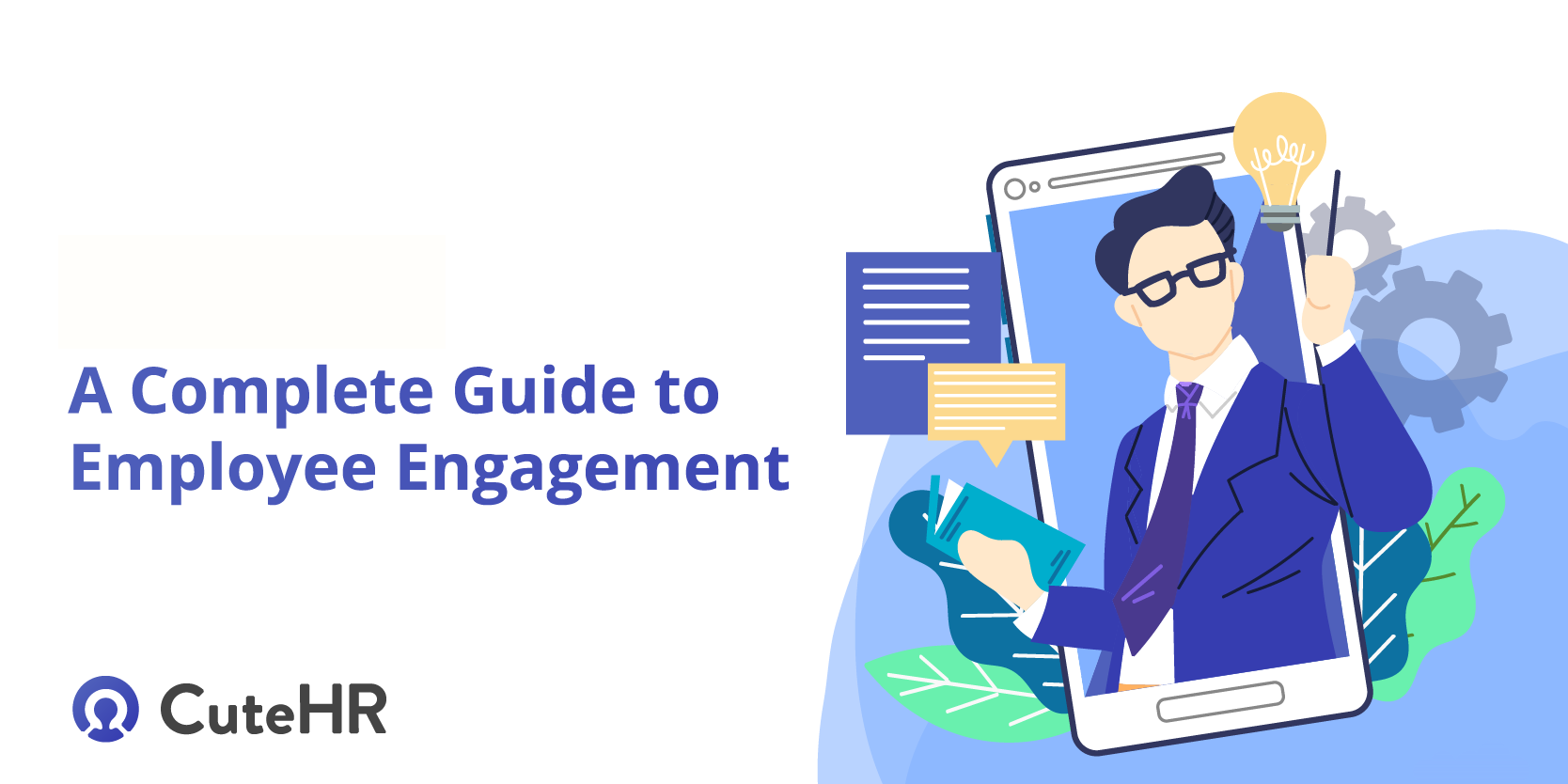
An Engaged Employee is the Holy Grail for any business. With enumerable aspects linked to Employee Engagement, it has become a matter of critical interest for any organization to drive growth and opportunity.
“Always treat your employees exactly as you want them to treat your best customers.”
–Stephen R. Covey
Broadly based on commitment, employees can be categorized as:
- Actively Engaged: Employees who are passionate about their work and are committed to the vision and goals of the organization. They are innovative and provide new ideas and consistent performance to move the organization forward.
- Not Engaged: Employees who perform at the bare minimum level of performance and have less emotional attachments to their workplaces. They work only optimum to what is expected or asked. Their only motivation at work is the monthly paycheck.
- Actively Disengaged: These employees are unhappy, resentful, and spread negativity within the organization. However, despite doing less than the minimum, these employees stay longer in the firm by removing employees through politics whom they perceive will attain higher positions soon.
Table of Contents
What is Employee Engagement?
Employee Engagement is an intrinsic attitude that describes an employee’s commitment towards his job. It is a fundamental concept that describes the relationship between an employee and his employer.
An “engaged employee” is one who is fully absorbed and enthusiastic about his work and takes positive action to boost the organization’s reputation and interests.
Manager Impact On Employee Engagement
People don’t leave companies, they leave managers. A manager has an intrinsic role in keeping the team motivated and engaged. Managers who fail to create a positive culture of openness and fairness risks building a strong and highly engaged team. But by fostering a style that is more participative and collaborative, supervisors empower their employees and keep them aligned to business goals.
Also Read: Workforce management needs mentors, not managers
Benefits of Employee Engagement
Before we start to understand the different strategies that fuel positive employee engagement, it is important to first know why the organizations need to focus on this and what benefits it can reap in the long run.
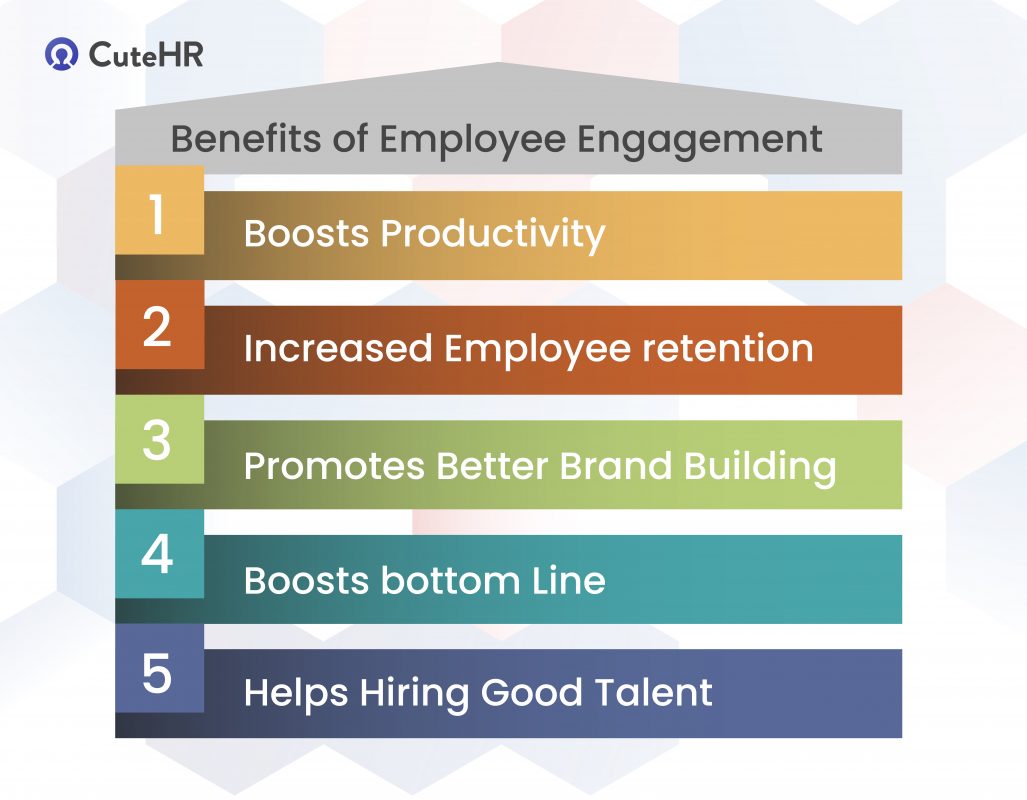
Read on for all the benefits of employee engagement:
- Boosts Productivity
- Increased Employee Retention
- Promotes Better Brand Building
- Boosts Bottom Line
- Helps Hiring Good Talent
1. Boosts Productivity

An engaged employee focuses on constantly improving his skills and aims at higher levels of contribution each time. Such an employee is emotionally engaged at delivering results and hence contributes to increased productivity.
2. Increased Employee Retention
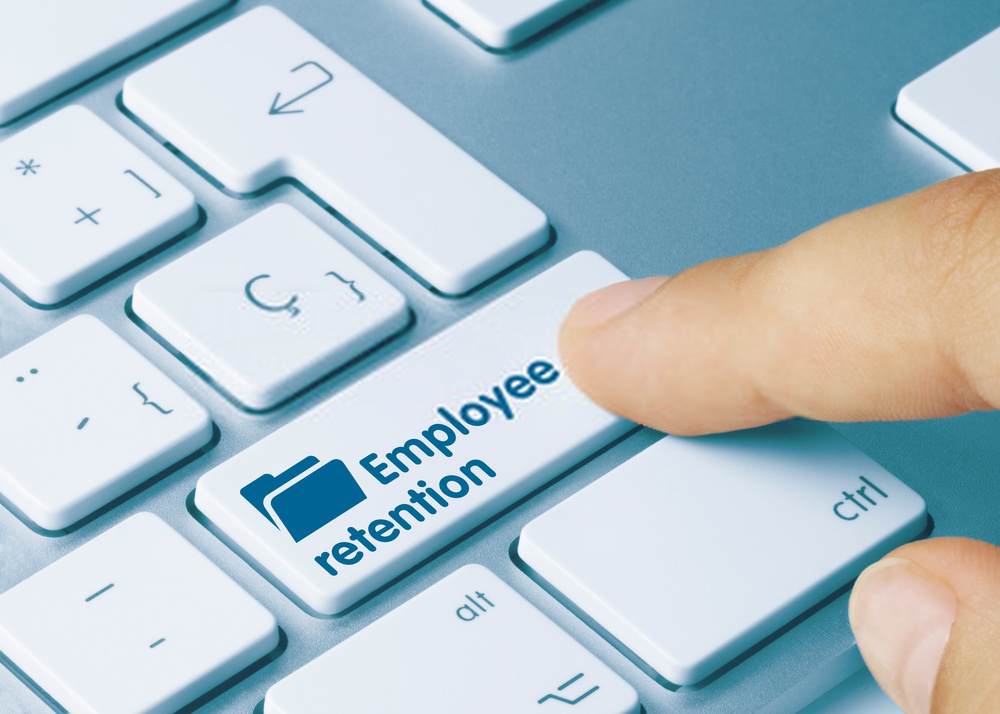
A Happy Employee is an engaged and retained employee. Sound employee engagement initiatives promote happy and healthy workplaces. With an environment that attends to employee’s wellness employee retention can easily be achieved.
3. Promotes Better Brand Building
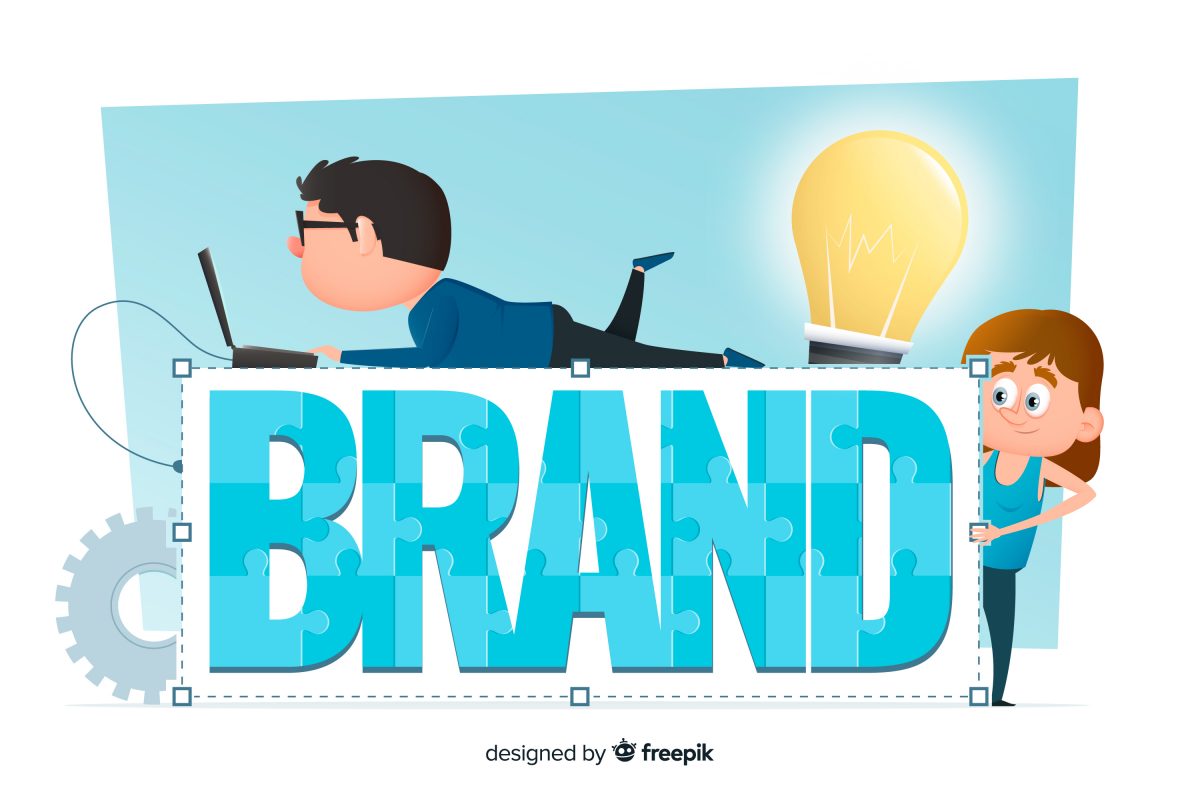
Gone are the days when the company’s brand or image building was just concise in promoting product marketing strategies. These days, many companies take initiatives to promote their corporate work culture and policies in enhancing brand visibility and strength. An Engaged Employee is your best brand Endorser.
4. Boosts Bottom Line

With employees who are highly engaged and focussed on delivering value additive performance, the result is always promising. With positive work engagement, productivity increases and hence the bottom line improves.
5. Helps Hiring Good Talent

Hiring and Talent Acquisition of the right talent is directly correlated with employee engagement and growth. Any new hire wants to know two things:
- Can this company provide me with ample opportunities to grow?
- Do this company’s value and work culture resonates with my professional skills and development?
When the economy is booming and there are ample job openings with a dearth of rightfully employable people, it becomes important to keep new employees engaged and motivated.
The Study finds employees disengaging from their organizations because of a lack of professional development. The important questions to answer is
- Why does your organization value its employees?
- Is it for what they provide you with right now? Or
- Do you value what they can become during their service with you?
Important Needs of the Engagement Pyramid
When you can align your organization’s development opportunities with the parameters that motivate employees, constructive employee engagement can be achieved.
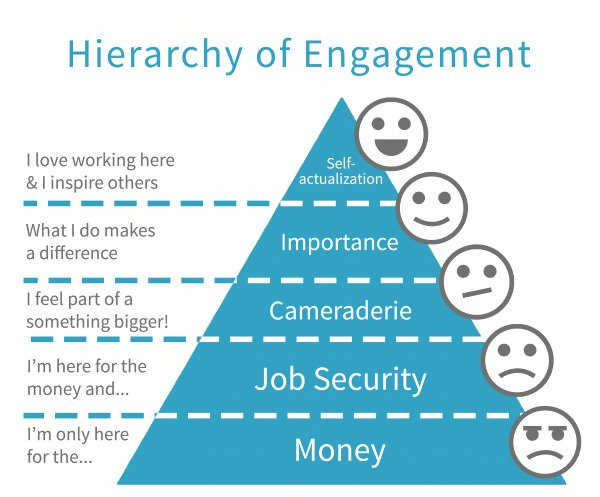
As per Maslow’s Hierarchy of Needs, employee motivation starts from meeting the basics of competitive salary and amenities to a stage of self-actualization contextually defining the clarity of career path and the ability to encourage others.
You have enough money to meet your primary needs for survival. You get paid competitively and given ample access to essential amenities to support good work.
After Money, it’s the job security and certainty that drives one to be engaged at work leaving aside any worry.
A sense of camaraderie – an understanding that you are all working together for an important objective. This is what is called an Engaged Purpose. There is a sense of shared belief in the mission and goals of the company.
Feeling appreciated – It is about knowing that what you do makes a positive impact and that people value your contributions. You are one of the trusted colleagues and you can drive effective change and permissive policies with a common consensus.
Self-actualization – This is what we can call “room to grow.” Employees who reach this level are the most engaged and are generally self-managing, which means all they need is a little encouragement to run with their ideas. They have the highest clarity of their career goals and are well-tuned with the company’s goals and objectives.
With this study as a benchmark to describe Employee Engagement, one can safely say that hiring and retaining the right talent is an organic process that needs to be part of your company’s basic structure.
Employee Engagement Strategies to Build An Engaged Workforce
Employee engagement starts right from the time of hiring and is a process mapped throughout the journey of the employee within the system. Let us now look at the various Employee Engagement Strategies that can be effective in fostering and building an ‘’Engaged workforce”.
(A). Strong Hiring Strategy
A 2018 job survey from Jobvite indicated that
33 percent of new hires leave the company within the first 90 days.
Hiring, keeping long term employee engagement in mind can help you retain for a long haul. A strong hiring strategy includes:
- Identifying and recording attractive job descriptions
- Developing a uniform and competitive salary structure
- Sound on-boarding process with clear communication on expectations and deliverables
- Pacing the learning and hand-holding during the initial days of the employee to ensure he/she is well-aligned with the company’s goals.
(B). Open Communication
Transparent and open communication is the threshold of trust and loyalty. An open, positive and constructive communication establishes an emotional chord of loyalty and legitimacy between the employees and the employer.
The emotional need of being heard is basic and makes you feel valued. Effective communication not only helps solve any chronic issue within the system but also strengthens the overall culture in the organization.
(C). Employee Recognition And Incentive System
While financial rewards are basic to meet survival needs, a study shows that employee engagement is beyond satisfying just the monetary needs of the employees.
Employee recognition is a terrific tool to foster a positive relationship between employee and employer and fulfills the need for job satisfaction through esteem and recognition as per Maslow’s Hierarchy. People want to be acknowledged for their contribution at work and feel motivated to even go the extra mile if they know they are being appreciated.
This can be achieved through:
- A Frequent routine of monthly or quarterly recognition models.
- Having engaging recognition activities weekly to promote peer to peer appreciation network.
- Make Appreciation a more ingrained part of the culture more than just a structured practice.
- Create Recognition programs that address any disparity on any grounds and fosters an equal opportunity model.
Also Read: Excellent Ways to Celebrate Employee Appreciation Day
(D). Create A Value Culture Through A Defined Purpose
An organization’s culture is the collaboration of the beliefs and behaviours that defines interactions between employees and other key stakeholders, both internally and externally.
Culture manifests in things like hours, dress code, benefits, workspace, turnover, and customer care and satisfaction. It is a less tangible asset but describes the commitment or vibe that people bring to work each day and the mindset that drives them to work. While culture is an organic transformation that gets developed over some time, setting the right actions in place fosters employee engagement.
This can be further enhanced through pillars of P.A.C.E
Performance. Accountability. Communication. Enabled
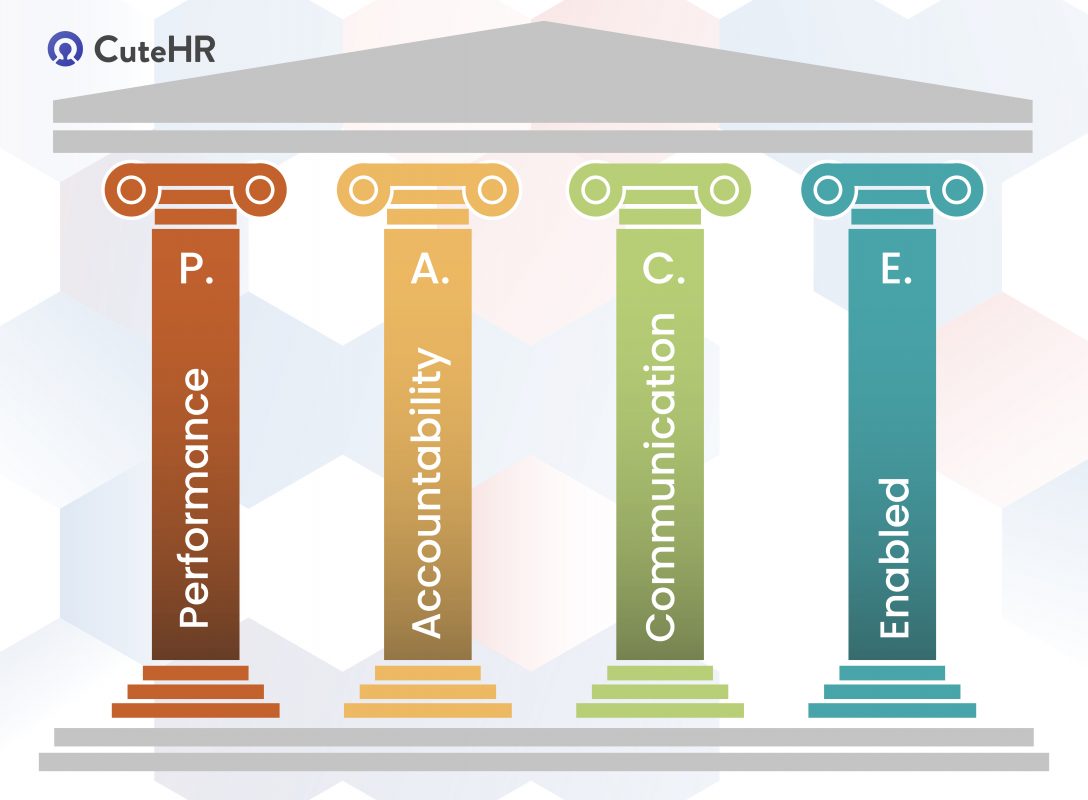
Conduct regular team interactions to promote collaborative working. Organize team retreats, off-sites, and team building activities to foster a positive value culture.
(E). Health and Wellness Programs
Health and Wellness is a critical employee engagement strategy and significantly impacts the productivity and general well-being of the employee. As per the Gallup Study,
A whopping 62% of respondents believe that their positive engagement at work has noticeable effects on their health.
Employee Wellness is not just a perk or extra initiative but an important business decision today having a significant impact on absenteeism, attrition, and productivity at large.
There are various ways to promote and encourage good health and wellness for employees. A few are listed here
- Organizing Group fitness Challenges, Boot Camps, etc. to encourage healthy competition and peer to peer interactions.
- Have regular gaming sessions to stimulate innovation and cognition.
- Providing optimum work-life balance initiatives for employees to attend to personal obligations without affecting work.
- Organizing Yoga or meditation sessions to take care of the mental health of the employees.
- Providing access to healthy meals and snacks throughout the workday.
(F). Well Defined Roles and Responsibilities
The Clarity of goals at the organization level is key in building an engaged Workforce. To contribute effectively, an employee needs to know how much is valued and how valuable is his contribution.
Having clear job roles is to instil clarity and align the employee with the mission and vision of the company. Without this, employees run risks of disengagement, confusion, and burnout.
A focussed leader needs to educate the purpose of driving the business forward and make sure that every employee is well-aligned to it. To achieve this:
- Define clear Job Roles.
- Determine weekly or monthly goals.
- Conduct assessment training to monitor and analyze the skill mapping with job requirements.
(G). Friendly Workspaces
A big role of having the right kind of workspace for your team is to show them that you care and want to make a place that they’ll enjoy and will promote their growth.
Ideal office workspaces reflect their company’s brand and cultural values and are conducive to the types of behaviours and activities that support the business. They are drivers of creativity and performance. For this:
- Create spaces that reflect and match your company’s value system.
- Have the right blend of open spaces for collaborations and areas to focus and work in solitude.
- Add the fun elements like a snooker table, football, etc. to up the recreation factor and provide a balanced atmosphere for employee engagement.
- Create break rooms for positive collaborations, connectivity and community building.
(H). Encouraging Personal and Professional Development
With the new age era and the paradigm shift in how industries function today, there is a transition in the way how the workforce is perceived as. There is a change from defining people as Human Resources to ‘Human Capital’. Employees are no more just resources for achieving business goals but valuable assets that determine the future of the company.
So it is imperative today to see how the Human capital is functioning and growing within the system. That’s why having a personal and professional growth strategy for your employees is an integral concept in employee engagement, and something you can’t ignore.
This is no more an option but a necessity if the companies want to build a good talent pool and control attrition. Following are a few action ideas:
- Promoting skill-specific certifications to harbour professional development that will ultimately benefit the organization at large.
- Encourage employees for small breaks and sabbaticals to pursue personal passion, travel and experience new adventures. This refuels their energies to gear up for larger contributions at work.
- Organize regular seminars and workshops for employees to leverage and upskill themselves.
- Conduct games, quizzes writing exercises, etc to stimulate agility.
Finally with all the strategies in place, the most important step is to create an action plan for the same. A systematic approach in achieving and enabling the Employee Engagement plan lays the foundation for thriving organizations.
A Few Pointers to Execute The Strategy Includes:
- Audit the current communication and culture structure.
- Conduct engagement Surveys to identify what plan can be formulated.
- Finalize and build a concrete strategy based on the inputs received through surveys.
- Communicate the new strategy to identify the preparedness of the team for the same.
- Launch and execute engagement programs with equal involvement of managers and other stakeholders.
- Assess the synergies and participation.
Conclusion
So as we conclude, a well-built engagement strategy will help organizations benchmark their brand value. Always remember such organizational transformations is not an overnight exercise is a more organic process.
It is important to be sensitive and aware of this concept at large and align your company’s goals in creating the best in class Human Capital.
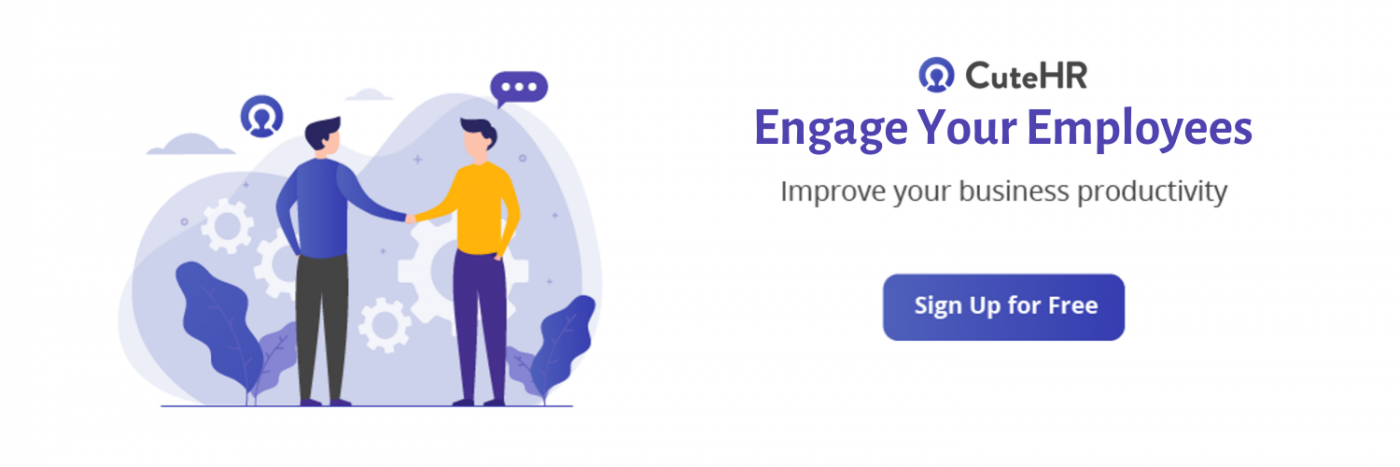
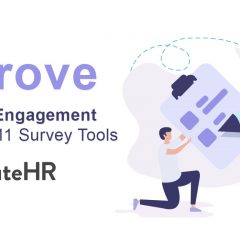
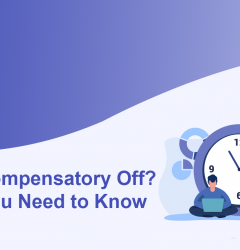
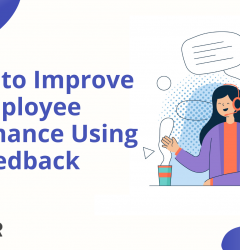







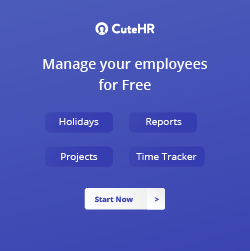

Jyoti Kapoor